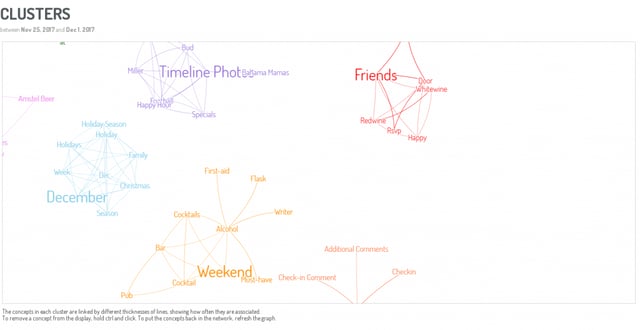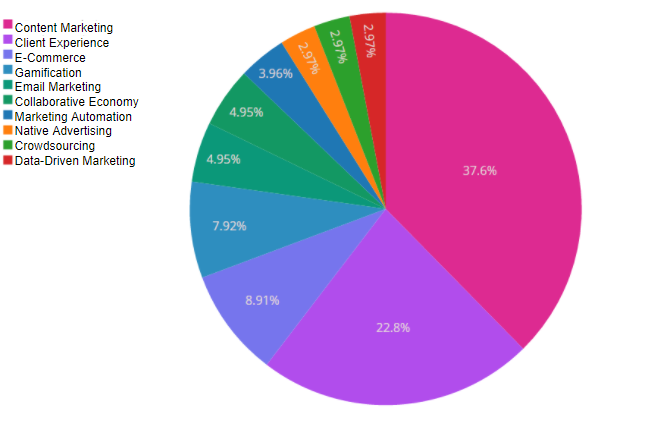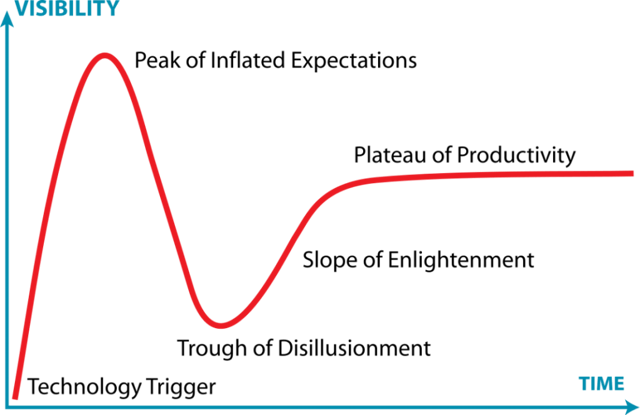Monitoring and Analyzing Social Media Trends: The Best Practices
Differentiating a brand’s products and services from those of competitors is a primary concern for marketers in any industry. The ability to monitor trends in real time is an incredibly valuable tool for anticipating changes in the market and remaining at the forefront of competition. However, analysis of market trends must extend beyond the activities of competitors - brands must be able to detect new consumer behaviors, habits, and lifestyles and analyze their potential impact on the brand’s products and overall industry market. Such data enables brands to develop new products, collect feedback regarding existing products, and effectively segment their service offerings to target new audiences.
Analyzing online conversations is an invaluable method for understanding public perception, the specific expectations, and emerging market trends relevant to a brand’s products and services. However, analyzing online conversations is not enough: brands should connect with opinion leaders, specialized media researchers, journalists, and market experts in order to discover emerging trends and to understand pre-existing trends.
This type of analysis involves several steps: knowing where relevant conversations are occurring, determining the insights within conversational trends, and analyzing potentially large volumes of data.
A social intelligence tool enables brands to capture this data automatically, and do the following:
- Understand current and predict future market trends
- Detect disruptive technological innovations within relevant sectors early on
- Identify potential networking and partnership opportunities
- Collect insights into the commercial appeal of existing innovations, technologies, and products
- Recognize consumer needs, behaviors, and habits
For these reasons, this article will outline some best practices for tracking social media trends.
Where to Begin?
The Goals of Trend Analysis
The first step in researching trends should always be to define your goals. For example, a brand’s goals might involve discovering macro trends in its industry, gain insights on the target audience, research consumer behavior, or collect feedback on products and services. Once these goals have been defined, it’s important to select tools which will enable the brand to detect and process relevant data.
Detect and Monitor Major Trends
An excellent method for discovering new topics of interests and sources to monitor is to analyze the evolution of social media conversation on industry-related concepts. Ideally, research should begin with general concepts before analysis is refined to keywords which are consistently used over a relatively long time period. Finally, relevant ideas can be segmented into clusters of similar topics for easier collection of data most relevant to the study’s interest.
 A sample concept cluster of topics related to American beer brands, via Digimind Social.
A sample concept cluster of topics related to American beer brands, via Digimind Social.
Methodology
Here are commonly used methods for monitoring trends:
- Define 3 to 4 major topics to monitor
- Create analysis filters to ensure granulated data collection. For example, research on marketing trends might filter messages by email marketing, content marketing, customer relations, data-driven marketing, etc.
- Analyze commonly used hashtags and their volume of use regarding key concepts - both brand-created and spontaneous hashtags should be monitored
- Analyze Google searches to identify underlying trends in keywords and trends related to current events. Google’s search suggestions also provide valuable information on consumer trends and user reviews
- Track the messaging of opinion leaders and influencers within the industry to determine emerging topics of interests - for example, many digital experts are currently interested in the Internet of Things and artificial intelligence
- Use Twitter and LinkedIn to find new thought leaders
- Identify key events within the industry on emerging trends and monitor commonly used language to identify macro concepts
- Monitor industry’s outside of the brand’s sector to detect potential overlapping trends
 Examples of common digital marketing concepts and their share of voice, via Digimind France's
e-book.
Examples of common digital marketing concepts and their share of voice, via Digimind France's
e-book.
Case 1: Generating Brand Awareness
A major insurance brand uses Digimind’s social intelligence tool to raise brand awareness and to develop lobbying capability. The brand monitors emerging social media trends regarding the health insurance industry. To collect more segmented data, the insurer segmented their data collection by opinion leader, industry experts, journalists, politicians, professors, practitioners, policyholders, and unions. Additionally, the insurer created an alert system within Digimind Social to inform decision-makers when specific key terms were used regarding industry trends. The director of communications is alerted to these trends in determining messaging themes to develop, topics to explore, and people to contact according to the collected insights. The communications and marketing departments also receive a daily newsletter which summarizes newly detected trends and opinion leaders.
Case 2: Using Trend Expertise to Differentiate
A Digimind client within the merchant banking sector uses social listening to stay on top of major FinTech, economic, and banking trends. The firm also follows sectors corresponding to the industries of sponsors within the arts and sports industries. Additionally, the firm uses the tool to monitor his competitors in order to successfully differentiate its content and messaging. To demonstrate the firm’s expertise in social intelligence to clients and prospects, the firm shares its insights on LinkedIn and Twitter. When 27% of Twitter users in the banking industry follow relevant content and discuss financial news on their personal Twitter accounts, this is an excellent strategy for nourishing brand reputation. Our client uses these trend analyses to position the company as an expert in forecasting and to differentiate itself from competitors.
Determining Key Topics
In order to be at the forefront of industry trends and developments, brands innovate by listening to the needs and concerns of consumers, industry experts, and opinion leaders. Once the primary sources of information are identified, it’s important to determine the main ideas which will be helpful for identifying emerging, growing, maturing or declining trends. Below are some practices for determining topics of interest:
- Identify commonly discusses topics related to market products, services, and technologies
- Segment topics by strength of trend: unexpected, weak, emerging, growing, mature, mainstream, declining (see image below)
- Report trend type by percentage growth or decay invisibility
- Analyze the sentiment associated with trending conversations and how this sentiment evolves over time
- Identify channels and geographic areas where relevant conversations are taking place
 The
Gartner Hype Cycle, representing brand visibility over time.
The
Gartner Hype Cycle, representing brand visibility over time.
Best Practices
The following are best practices for leveraging social intelligence to detect trends:
- Involve your team: share data obtained from the social intelligence project with all departments, not only marketing and communications. In-house testing can be done by organizing operating scenario workshops around newly detected trends.
- Consider regional peculiarities: ensure that the brand considers cultural differences when penetrating foreign markets so that marketing content and campaigns are not misunderstood or taken as offensive
- Be creative: practice creative research and analysis to move away from existing and historical knowledge
- Monitor consistently: constantly monitor the brand’s market environment and related online conversations. Understand that people with similar interests tend to form think tanks and exchange ideas among online communities
- Integrate: ensure that collected data is well-integrated into innovation, communication, and marketing strategy processes.

